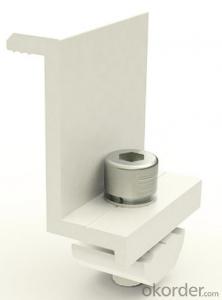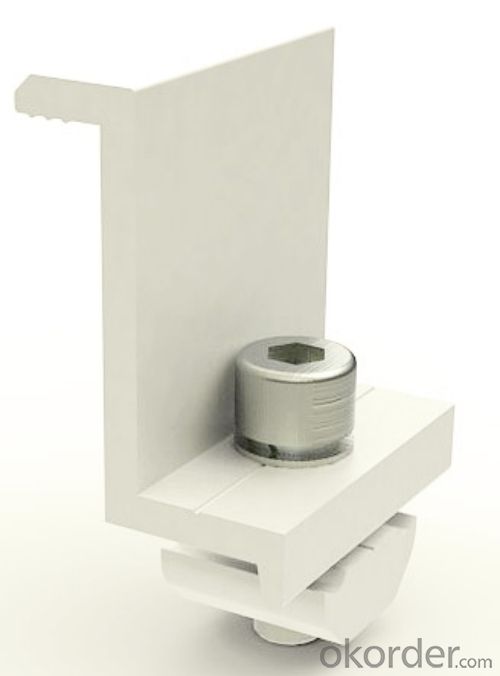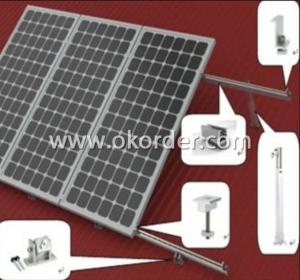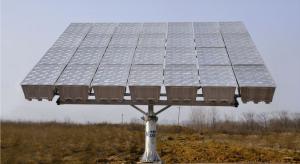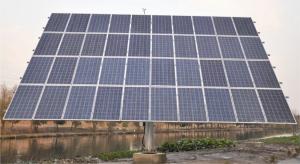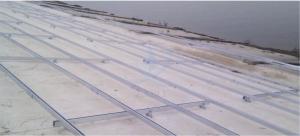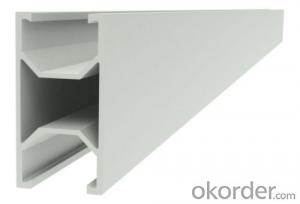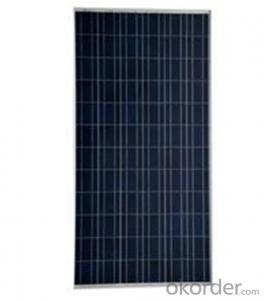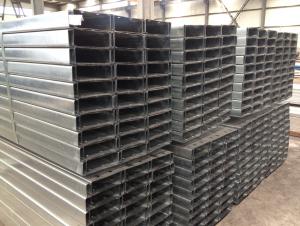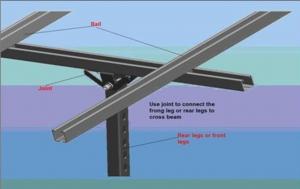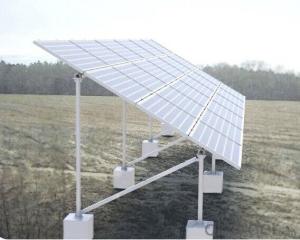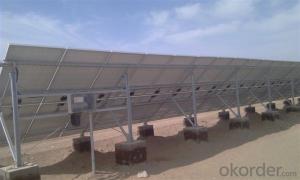Pt Solar Mounting System - Framed Solar Panel Clamps and Adjustable End Clamps for Solar Power System Components
OKorder Service Pledge
Quality Product, Order Online Tracking, Timely Delivery
OKorder Financial Service
Credit Rating, Credit Services, Credit Purchasing
You Might Also Like
Solar Power System Components, Framed Solar Panel Clamps, Solar Mounting System Adjustable End Clamps
Specifications
Solar Mounting System End Clamps:1)ISO 9001,AS/NZS 1170&TUV certified
2)Fit all kinds of panels
3)Easy installation
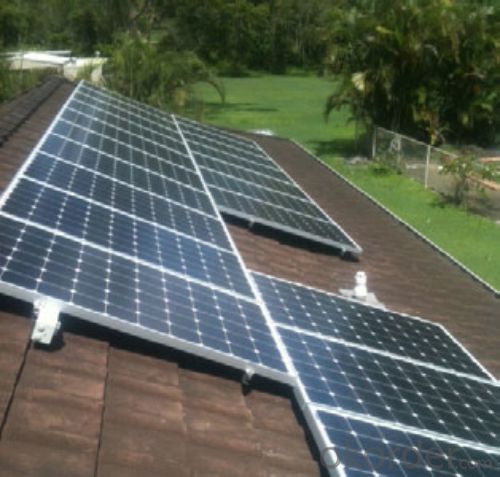
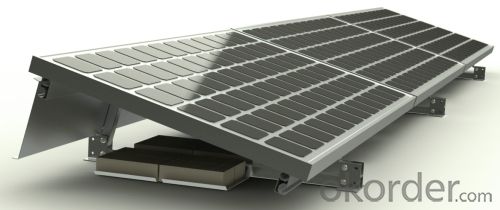
- Q: How to remove the climbing bag bracket
- A good backpack is a good partner, travelers are very seriously and cherish their own mountain backpack. Mountaineering backpack is used for climbing, and other adventure sports (such as rafting, crossing the desert, etc.) and long journeys are also widely used.
- Q: Can a solar mounting system be easily removed if needed?
- Yes, a solar mounting system can typically be easily removed if needed. Most modern solar mounting systems are designed with a modular and adjustable structure that allows for easy installation and removal. This is particularly important for maintenance or repairs, as well as when relocating or upgrading the solar panels.
- Q: Can a solar mounting system be used with solar-powered RVs?
- Yes, a solar mounting system can be used with solar-powered RVs. A solar mounting system is designed to securely hold solar panels in place, and it can be easily installed on the roof or any other suitable location of an RV. This allows RV owners to harness solar energy and power their vehicles using clean and renewable energy sources.
- Q: Can a solar mounting system be used with solar-powered electric bikes?
- Yes, a solar mounting system can be used with solar-powered electric bikes. These mounting systems are designed to hold solar panels securely in place, allowing them to harness solar energy to charge the batteries of electric bikes. This sustainable solution can enhance the range and reduce the reliance on traditional charging methods for solar-powered electric bikes.
- Q: Can a solar mounting system be used with solar-powered street lights?
- Yes, a solar mounting system can be used with solar-powered street lights. A solar mounting system is designed to securely mount solar panels, and solar-powered street lights typically have solar panels that capture sunlight to generate electricity. By using a solar mounting system, the solar panels of the street lights can be positioned optimally for maximum sunlight exposure, ensuring efficient charging and operation of the lights.
- Q: Can solar mounting systems be used for both residential and commercial installations?
- Yes, solar mounting systems can be used for both residential and commercial installations. These systems are versatile and can be customized to accommodate various types of roofs and ground surfaces, making them suitable for both residential homes and larger commercial buildings.
- Q: Can a solar mounting system be used in areas with limited access to solar research facilities?
- Yes, a solar mounting system can be used in areas with limited access to solar research facilities. Solar mounting systems are primarily designed to securely install solar panels and provide structural support, regardless of the location. While access to solar research facilities may provide additional resources for testing and optimization, the functionality and installation of a solar mounting system can still be achieved without direct access to such facilities.
- Q: Can a solar mounting system be used with solar greenhouse systems?
- Yes, a solar mounting system can be used with solar greenhouse systems. A solar mounting system provides a secure and efficient way to install solar panels, which can be integrated into the structure of a greenhouse. This allows for the dual benefit of harnessing solar energy for electricity generation while also providing a controlled environment for plant growth.
- Q: Can a solar mounting system be tilted to optimize the angle of the panels?
- Yes, a solar mounting system can be tilted to optimize the angle of the panels. This adjustment allows for better exposure to sunlight, maximizing the energy output of the solar panels.
- Q: Can a solar mounting system be used in areas with strict building codes?
- Yes, a solar mounting system can be used in areas with strict building codes. However, it may require obtaining proper permits and complying with specific regulations set by the local authorities. Additionally, the system design and installation must meet the building code requirements, such as structural load limits and fire safety standards. Consulting with a professional solar installer and working closely with the local building department can help ensure compliance with the strict building codes.
Send your message to us
Pt Solar Mounting System - Framed Solar Panel Clamps and Adjustable End Clamps for Solar Power System Components
OKorder Service Pledge
Quality Product, Order Online Tracking, Timely Delivery
OKorder Financial Service
Credit Rating, Credit Services, Credit Purchasing
Similar products
Hot products
Hot Searches
Related keywords
